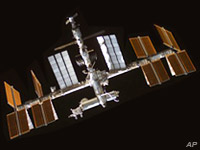
The first human-robot conversation in space will take place later this year aboard the International Space Station.

The chat will be between Kirobo, one of two humanoid communication robots developed under Japan’s Kibo Robot Project, and Japanese astronaut Koichi Wakata after he arrives at the station sometime in November or December.
Kirobo will be on board the Kounotori unmanned resupply spacecraft scheduled to launch into space Aug. 4 from Japan’s Tanegashima Space Center.
“I believe that this development is a significant milestone in the exploration of space,” William I. Newman, professor of earth and space sciences at the University of California Los Angeles, told TechNewsWorld. “The use of robotics [in space] is essential.”
Robots can relieve astronauts from mundane chores such as maintenance and upkeep of the station, or from potentially more dangerous activities such as repairing spacewalks or setting up habitats prior to a landing, said NASA spokesperson Daniel Huot.
What Makes Kirobo Tick
The Kibo Robot Project that produced Kirobo is a research project conducted jointly by Japan’s Research Center for Advanced Science and Technology, the University of Tokyo, Robo Garage and Toyota, together with the Japan Aerospace Exploration Agency.
The University of Tokyo and Robo Garage worked on the robot hardware and motion generation; Toyota created the voice recognition function; and Dentsu created the conversation content and managed the project.
Kirobo is about 13 inches tall, 7 inches wide and about 6 inches deep. He weighs about 2 lbs. and speaks Japanese.
The robot’s capabilities include voice and speech recognition, natural language processing, speech synthesis and telecommunications, as well as facial recognition and video recording.
Planning for Kirobo’s trip to the international space station commenced in February. Wakata, with whom the robot will converse, will be the station’s first Japanese commander.
What they will talk about or how long they will chat is currently unknown.
Will the Real Kirobo Please Stand Up?
It’s not clear whether the Kirobo robot astronaut is any relation to this Kirobo robot kit from Japanese firm Elekit.
Elekit’s Kirobo has two light and two touch sensors and is programmed using IconWorks, a specialized software developed for the purpose. Programming apparently requires users to just arrange icons on a PC screen as desired and transfer the program to Kirobo through a transfer cable. The robot will then perform the actions required.
The Elekit Kirobo robot can trace a line, negotiate around obstacles or follow a light, among other things.
The CPU comes in a box that has several slots so users can create their own robot shell.
This Kirobo uses a RISC (reduced instruction set computing)-type PIC16F88 CPU with flash memory. It has DC motors, and runs for about six hours on four AA batteries. The device weighs about 8 oz. excluding the batteries.
Human-Cyborg Relations
Robotics “continues to be an integral function in humanity’s quest to explore our solar system,” NASA’s Huot told TechNewsWorld. The international space station has Robonaut, a humanoid robot produced by NASA that is now in its second generation.
Robotics technologies will benefit unmanned space exploration, concludes a report that came out of meetings over the latter half of 2012 among more than 160 people in various universities as well as the California, Georgia and Massachusetts Institutes of Technology. Such advanced applications will, in turn, offer insights into how robotics can be used in daily lives.
While integration of robotic and human efforts in the long term will be very important, many barriers that continue to exist in human-robot communications must be solved first, UCLA’s Newman said.
“I used voice recognition software to compose my message,” he added, but “I rather doubt that my iPhone truly understood the words that I said.”





















































